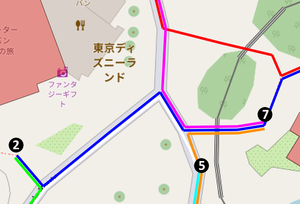Speaker: Thomas Köppel (193-02 Computer Graphics)
Route planning is a common task that often requires additional information on points of interest. Augmented Reality (AR) enables mobile users to explore text labels and provides a composite view associated with additional information in a real-world environment. Displaying all labels for points of interest on a mobile device will lead to unwanted overlaps, and thus a context-responsive strategy to properly arrange labels is expected. This framework should consider removing overlaps,
the correct level-of-detail to be presented, and also label coherence.
This is necessary as the viewing angle in an AR system may changes frequently due to users' behaviors. The consistency of labels plays an essential role in retaining user experience and knowledge, as well as avoiding motion sickness. In this thesis, we aim to develop an approach that systematically manages label visibility and levels-of-detail, as
well as eliminates unexpected incoherent label movement. To achieve this, we introduce three label management strategies, including (1) occlusion management, (2) level-of-detail management, and (3) coherence management. A greedy approach is developed for fast occlusion handling. A level-of-detail scheme is adopted to arrange various types of labels in AR. A 3D scene manipulation is built to simultaneously suppress the incoherent behaviors induced by the changes of viewing angles. Finally, we present our approach's feasibility and applicability by demonstrating one synthetic and two real-world scenarios, followed by a qualitative user study.
